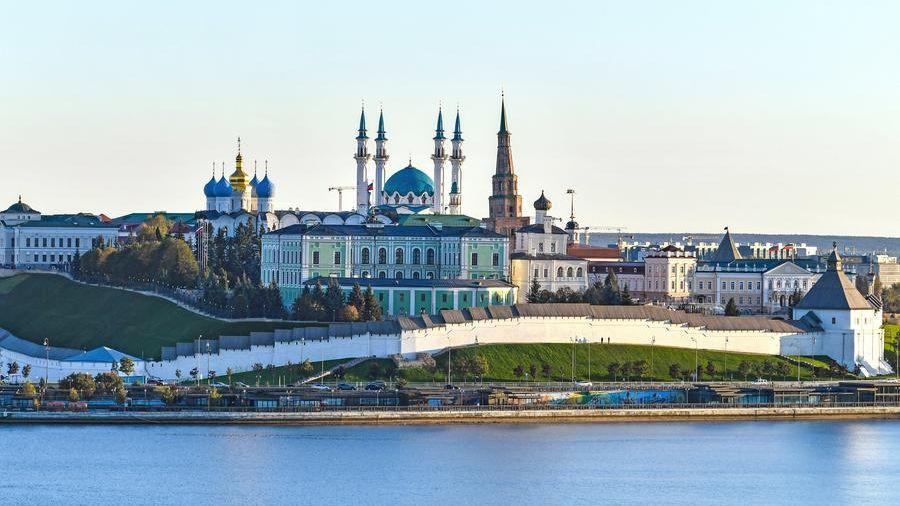This photo shows a view of the Kazan Kremlin in Kazan, Russia, Oct. 20, 2024. (Xinhua/Ding Haitao)
BEIJING, Oct. 24 (Xinhua) -- Economic and trade ties among BRICS countries are becoming increasingly close, and China is playing an important role in driving mutually beneficial BRICS cooperation.
The term BRIC was initially coined in 2001 as a concept referring to the emerging market economies of Brazil, Russia, India and China. With South Africa's inclusion in 2010, BRICS officially took shape.
Following last year's expansion, the BRICS grouping now represents approximately 30 percent of global GDP, nearly half of the world's population, and one-fifth of global trade. It has become the world's most important platform for solidarity and cooperation among emerging markets and developing countries.
The 16th BRICS Summit, held Tuesday to Thursday in Kazan, Russia, has drawn global attention and is believed to bring new economic and trade cooperation opportunities between China and other BRICS nations.
China's foreign trade with other BRICS member countries reached 4.62 trillion yuan (648 billion U.S. dollars) in the first nine months of 2024, a year-on-year increase of 5.1 percent, customs data showed.
The trade growth can be attributed to a high degree of economic complementarity, as well as China's commitment to high-level opening up and the free trade agreements between China and other BRICS countries, said Hong Yong, a researcher with the Chinese Academy of International Trade and Economic Cooperation under the Ministry of Commerce.
In the industrial sector, China's exports of steel and textile raw materials to other BRICS nations grew by 8.6 percent and 13.4 percent year on year in the first three quarters.
During the same period, China's exports of intermediate goods such as integrated circuits, tablet display modules and aircraft parts to other BRICS countries achieved double-digit growth, helping other BRICS members boost their emerging industries.
Trade in agricultural products has also been robust. In the first three quarters, over 80 percent of poultry and frozen pollack and over 50 percent of crabs imported by China came from BRICS members.
"For BRICS countries, trade cooperation is not only conducive to promoting technological exchanges and innovation but also to bringing more development opportunities for member countries and even the world," Hong added.
Regarding the financial sector, the New Development Bank is a flagship project of BRICS cooperation. As the first multilateral development bank established by emerging economies, the Shanghai-headquartered institution provides financing support for infrastructure development, clean energy, environmental protection, and the building of cyber infrastructure across BRICS countries.
Funding a raft of projects ranging from India's urban rail to Brazil's wind power complexes, the bank has cumulatively approved loans of 35 billion U.S. dollars for more than 100 projects to date.
Building on its commitment to multilateralism, BRICS has taken practical steps to unlock the potential of economic and trade cooperation and create new growth areas. These include policy coordination and joint initiatives to enhance trade and investment opportunities among member states.
At the 14th BRICS Economic and Foreign Trade Ministers' Meeting held in Moscow in July, participants agreed to step up exchanges and cooperation in emerging areas such as global value chains, digital technologies and special economic zones, conduct practical cooperation in green product standards, electronic documentation and e-commerce, and strengthen policy exchanges, capacity building and best practice sharing.
By enhancing economic and trade exchanges, BRICS countries have capitalized on their complementary advantages, serving as an important force to oppose trade protectionism and promote global economic growth, noted Liu Ying, a researcher with the Chongyang Institute for Financial Studies, Renmin University of China.





 A single purchase
A single purchase









